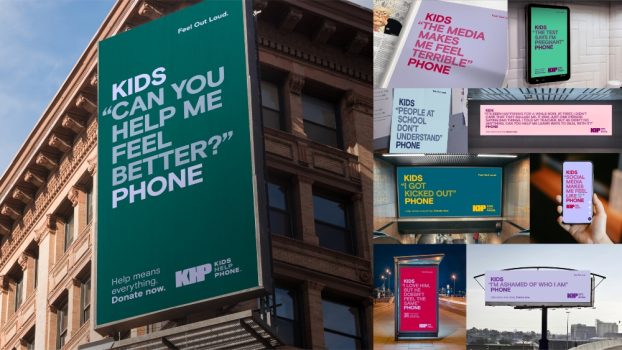This story appeared in Strategy C-Suite, a weekly email briefing on how Canada’s brand leaders are responding to market challenges and acting on new opportunities. Sign-up for the newsletter here to receive the latest stories directly to your inbox every Tuesday.
For consumers unaware of the mounting logistical and operational challenges, the global health crisis appears to have ushered in a golden age for grocers, says Jenn Hay, CMO at Toronto’s Fresh City Farms, an online-born retailer of organic produce and prepared foods.
But a huge uptick in online grocery shopping – captured in media headlines since the pandemic began – tells only part of the story for a company like Fresh City, whose goal over the last few years was to balance its online offering with a growing bricks-and-mortar presence, most recently through the opening of a large retail store in downtown Toronto in April.
At Fresh City, demand for online grocery surged three-to-five times normal levels around March 13, according to Hay. Daily customer acquisition numbers also skyrocketed, reaching five-to-ten times pre-pandemic levels between mid-March and early May.
As the province begins to awake from its economic slumber, acquisition levels are levelling off, she says, dropping to two-to-three times what they were before the outbreak. On May 6, it finally invited 11,000 waitlisted customers to shop its online store. It had stopped accepting new customers on March 20 due to excessive demand.
But there are indications that online sales growth has not yet lost momentum, despite the slowing down of new customer acquisitions in the past two weeks. According to Hay, the volume of daily deliveries has held steady and remains at three-to-five times pre-COVID levels. “A lot of the people that have become customers are staying customers.”
“That initial panic buying and fear of going out has subsided a bit,” she says. In its place, it appears “customers are still shopping online, but doing complementary shopping at some of their local storefronts in the neighbourhood or one weekly shop at a grocery store to complement home delivery.”
This has a host of implications for Fresh City and other grocery retailers, who must now grapple with the realities of a post-lockdown, pre-vaccine world. The company believes the pandemic has “enabled an acceleration of a pre-existing and emerging trend towards grocery delivery,” says Hay. “This is a trend we believe will stick for the majority, with retail shopping becoming complimentary versus primary.”
Only one year ago, Fresh City CEO Ran Goel told strategy that moderate-to-slow adoption of online grocery among Canadians was a big reason for expanding into bricks and mortar. “Even in the rosiest projections for online purchasing for grocery, you are looking at 10-20% in a decade and it’s going to be lower for prepared food and fresh servings of produce,” he said on the heels of his company’s acquisition of The Healthy Butcher.
When Fresh City first entered physical retail, Goel expected to open about 10 to 20 new stores in the city’s core over the next couple of years. In 2018, a year before acquiring The Healthy Butcher, it bought Mabel’s bakery and now has eight stores between the three banners.
“We are now coming out of the storm of the past 10 weeks to look at our future strategies with fresh eyes and new perspectives,” says Hay. “At this point, I don’t foresee our retail expansion plans changing in that we will continue to open additional retail locations as it makes sense – by brand and location. I do anticipate that our speed of opening new locations will slow as we continue to adapt to all of the additional precautions and investments needed to keep our staff and customers safe at our current locations.”
In early April, during the worst of the pandemic, the company went ahead with plans to open its second Fresh City location at the corner of Bay and Gerrard in Toronto. At 5,500 square feet, it’s much larger than its 2,000 square-feet store on Ossington, but still smaller than most large grocery chains.
“It definitely was not the opening we had planned or hoped for,” says Hay. “The store had been under construction for about a year, and we were so ready and excited to open the doors.”
In addition to a cafe with seating, sections of the shop are dedicated to fresh meat and fish, a salad bar and baked goods from Mabel’s bakery. Postponing the opening of certain sections, like the cafe and deli, until it’s safe for customers has been “a hit to the overall success of the store,” says Hay.
Remaining open through the crisis has presented a number of other costs and challenges unbeknownst to customers: from a massive uptake in supplies needed to maintain health and safety standards, to increased labour costs (due to hazard pay, irregular shifts and additional management). “Those are really important things for consumers to realize as well,” she says. “The complexity to operate businesses like ours have also dramatically changed.”
In spite of those challenges, the company felt it was necessary to move ahead with the planned retail expansion. Hay says the new shop is located within walking distance of five Toronto hospitals, giving healthcare workers access to an array of prepared grab-and-go items, salad jars, sandwiches, single-serve baked goods and an assortment of smoothies and other drinks.
To show its support for those workers, Fresh City is giving away a hundred $100 gift cards to healthcare and hospital workers in a contest that ends next week, and workers get 10% off food and beverage purchases at that location. “It’s just one way that we’re trying to say thank you to them for everything that they’re doing,” says Hay.
Throughout the crisis, the company’s consumer base has changed, with older customers joining the mix of what has typically been a younger-skewing base. According to Hay, those changes mean “we also need to rethink our marketing mix with some of the channels that we will advertise in the coming months, so that we can continue to sustain a healthy portfolio of customers.”
Historically, Fresh City has advertised primarily through paid social, Google ads and email marketing, with some direct mail in strong performing areas of the city. But in order to reach new customers, Hay says the company is considering testing on mass channels, like radio and print, which have typically “felt out of reach for us.”
“[We are] rethinking our marketing mix in terms of the channels that might be successful for us in this post-COVID world that historically weren’t really feasible.”


























